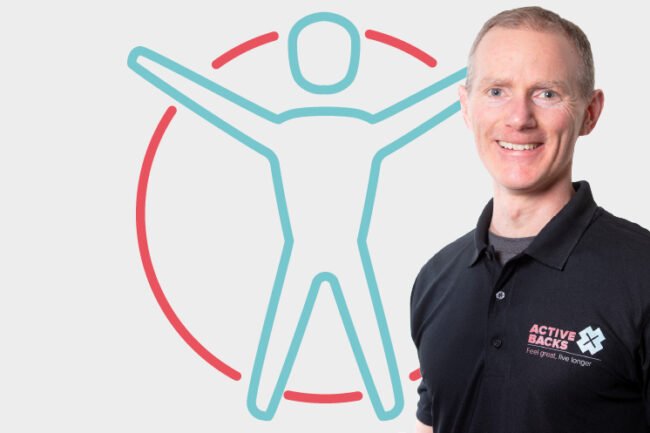How to take stairs with lower back pain / sciatica
How to take stairs with lower back pain / sciatica
This episode is entitled “How to take stairs with lower back pain / sciatica”. You will learn:
- Why going up and down stairs is different to walking on the flat
- How to adapt to painful stair climbing / descending
- How to turn stairs into a rehabilitation tool for your back pain / sciatica
Use it, but don’t abuse it. Stay active when you’re rehabilitating your lower back / sciatica. If you don’t use your different physical or mental attributes, you will lose them. That makes it more likely that your lower back problem will recur after it seems to have solved itself. Don’t abuse it means don’t do things that make your pain worse. If attempting to go up or down stairs is just agony, then you need to avoid it in the short term, or you need to do it in such a way that it doesn’t hurt.

Why going up and down stairs is different to walking on the flat
Walking on the flat, your spine is usually in neutral alignment, whereas going up, there is a tendency to lean forwards. By leaning forwards, particularly at the waist, you flex or bend forwards to your lower back. This puts the joints, muscles, ligaments, tendons and discs into a different mechanical loading position. There are different forces at play on the joints and discs, but also in leaning forwards and backwards.
Going upstairs, you’re moving and using muscles to do those movements very differently to walking on the flats. As you place the leading leg on the step above and try to push up, you are recruiting your gluteal muscles, which attach into areas which then attach into the muscle. There’s a overlap between these muscles. As you contract the gluteal muscles, you have an importance on your lumbar muscles, and this is painful. Going upstairs you recruit big, powerful muscles, which could cause you to spasms of pain. Going downstairs, you lean slightly back into extension and recruit muscles that you don’t recruit when you are walking on the flat.
How to adapt to painful stair climbing/descending
The power of the brace. Your abdominal muscles wrap all the way around and invent and attach into a fascia, a tough membrane that attaches around your lower back. By bracing, tightening up your abdominal muscles, you also stabilize your lower back. If you find stairs painful to start, lightly brace your abdominal muscles before you iniciate the movement. Tighten everything up as if a small child was about to punch you in the stomach. Tight them up at the foot of the stairs when you’re on your way up, tight them up at the top of the stairs when you’re on your way down. Keep them lightly pressed the whole time you’re on the stairs. You may find that you need to do one step at a time and that it’s easier to lead with one foot than it is with the other. Experiment and do it mindfully.
How to turn stairs into a rehabilitation tool for your back pain / sciatica
Be mindful about what you do. Take a little moment to think: what is it about the stairs that is difficult? Would it help to lean on the banister, or to grab a hold of something to help you to stabilize? When you grab the banister, grip it tight. This facilities other muscle groups tightening up and you’ll get a better breath. If you place your hand lightly on the banister and brush your abdominal muscles in many ways, that takes more thought than gripping the bannister tightly and bracing your abdominal muscles. This kind of mindful approach can be really helpful. You can use stairs as a rehabilitation tool by thinking about what is it about them that’s challenging and working out how to go up and down without pain.
The more learning you do, the better you understand your back / sciatica problem and the faster you’ll rehabilitate. You won’t make the same mistakes again and again, you won’t abuse it and you will have a smoother recovery. If at the moment you can get up a flight of stairs, but it’s a little bit painful by the time you get to the top, stick to one flight once or twice a day. Stick to the “use it but don’t abuse it” rule. Do it once, but the next day core halfway up and then turn and go back down again. Very slowly build up the number of stairs that you attempt.


